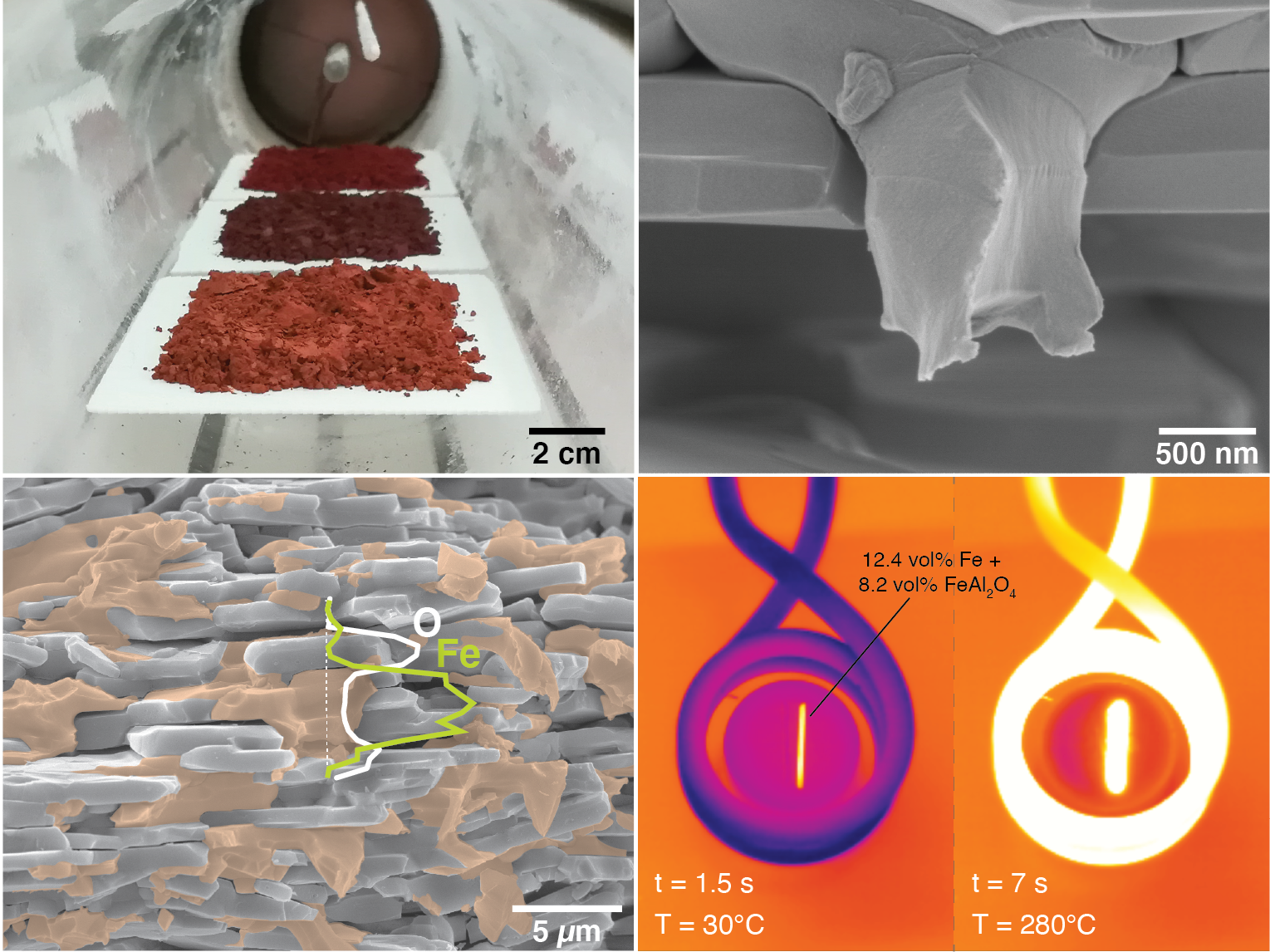Researchers from the Complex Materials group have developed a general processing route to fabricate metal-ceramic multifunctional composites with a nacre-like architecture. Besides high fracture toughness and stiffness, these composites also feature unique magnetic, electrical and thermal functionalities.

Material scientists have been taking inspiration from the brick-and-mortar architecture of nacre by combining ceramic bricks and polymer mortars using various processes. However, the use of a polymer matrix in nacre-like composites has limited the strength and elastic modulus of the mortar phase and thus the achievable toughness.
In a recent publication, a team of researchers from the Department of Materials, the Institute of Geophysics, the University of Bern and the Imperial College London developed a general processing route to fabricate these composites with metal mortars instead of polymers. This comprehensive study focused on the use of iron as the mortar phase to manufacture bioinspired multifunctional composites. They were prepared via sol-gel coating of micron-sized alumina platelets with iron and magnetically-driven assembly of these coated platelets into nacre-like architectures, followed by pressure-assisted densification. Such composites might find use in transport, aerospace and robotic applications that require weight minimization combined with magnetic, electrical or thermal functionalities.
Erik Poloni, Florian Bouville, Christopher H. Dreimol, Tobias P. Niebel, Thomas Weber, Andrea R. Biedermann, Ann M. Hirt, André R. Studart, Tough metal-ceramic composites with multifunctional nacre-like architecture, Scientific reports 2021, 11 (1), 1-12. DOI:10.1038/s41598-021-81068-z






